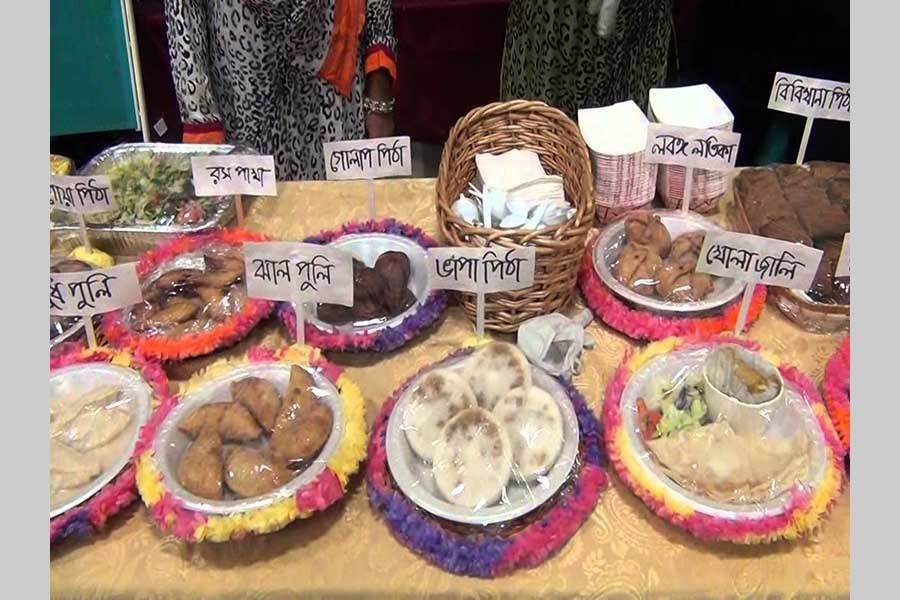
Published :
Updated :

Pitha's English translation is cake but the twins hardly ever meet to convey the same tasty treat. While pitha has a local, rather rural flair about it, cake has an aura of foreign culinary elitism. In cities and towns pithas are a rarity for most of the year. It is only with the arrival of the winter, the traditional taste bud's delight stages a comeback. The shorter the winter is the briefer the pitha span. After decades, this prolonged winter has created a proper setting for the traditional treat to have a longer stay.
The ubiquitous pitha caterers are almost everywhere in the city. These makeshift outlets are set up on a rickshaw van stationed at any conceivable location on roadside, footpath, in street corner or near a market, plaza, park or a busy road crossing. Business is brisk. But such pitha caterers usually serve two or three items -vapa pitha, chitoi pitha and malpoa. All because these are easy to prepare! The first-generation urban people who are nostalgic and pine for the delights of their childhood in village miss this essential ingredient and have to satisfy their craving with this poor substitute. The rich tradition of pitha culture is a dying one even in villages. Bakeries have made their presence felt in village markets too.
With dheki (husking wooden contraption) fast becoming extinct, date juice and molasses in the purest form and of the finest variety no longer produced, the best type of pithas are simply impossible to prepare. Also the rice powder now available is much inferior to the types of bygone years because the select varieties of rice from which powder was made are no longer cultivated. When date molasses is considered the ultimate test-enhancing ingredient of pitha, today its sugarcane counterpart or sugar is used for pitha preparation. Some of the varieties need pure milk or cream for their preparation. Today those are also prepared in towns and cities maintaining the culinary formula but the quality of milk is suspect and the preparation is nowhere near the original in taste.
The result is a poor imitation of the original. Today's young ones may feel ecstatic when the pithawalla serve them oven-fresh vapa or chitoi pitha with some coriander leave paste, but those who were fortunate to enjoy the treat at home where mother or sister made it sure that the pithas came off in the desired shape and size are unlikely to be satisfied. The rice powder is available in packet. Commercially produced, the powder is of inferior quality because it is powdered in machines and from low quality rice.
In order to take people on a nostalgic journey to their village root, the Bangla Academy and the Shilpakala Academy arrange yearly pitha mela or cake festival. Hundreds of stalls display a wide variety of cakes. Even the indigenous people of the hill districts represent their pitha art. Some of those preparations are unique and of excellent taste. One of the reasons may be that the hill people are yet to be corrupt like those of the plains in adulterating the consumables. They produce fruits without chemical fertiliser or insecticide. No wonder, fruits produced in Rangamati and Bandarban and also eaten there have a far better taste than those available in the capital's market.
Apart from the Bangla Academy and Shilpakala Academy, various other cultural organisations arrange pitha utsab. Even superstores like Agora also do the same in order to develop closer relations with their customers. Indeed, in a festive atmosphere customers also relish an opportunity to satisfy at least some of their unfulfilled nostalgic appetite. The lost taste of traditional cakes may never return but at least there is an attempt not to forget the tradition. The taste can definitely be improved, though, if the ingredients can be kept free of adulteration. Adulterated molasses and other ingredients not only downgrade the varieties but also the people's health. Let this health aspect be taken care of.


 For all latest news, follow The Financial Express Google News channel.
For all latest news, follow The Financial Express Google News channel.